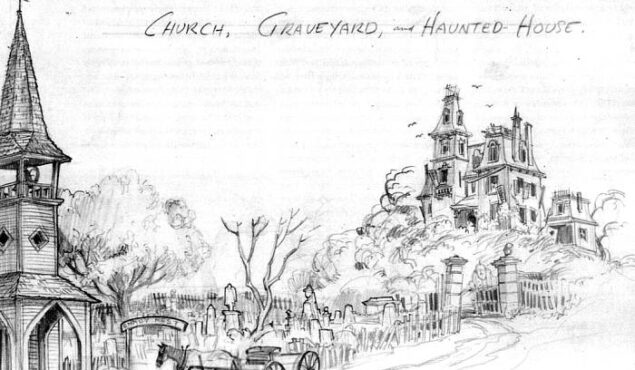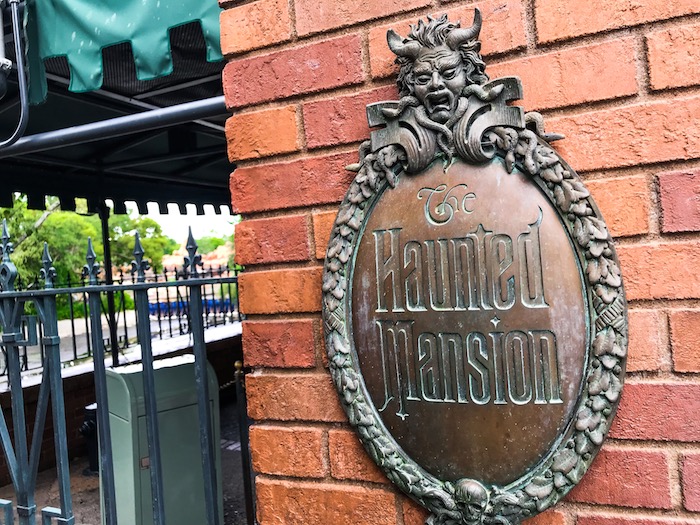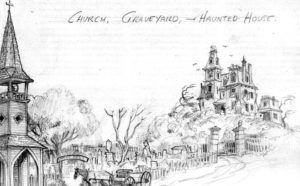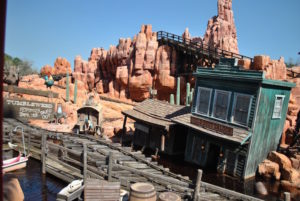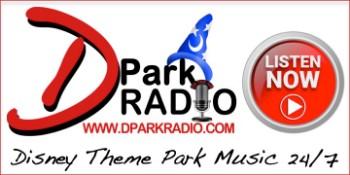Finding a Home for 999 Happy Haunts
By Heather M. Leber
“When you hear the knell of the requiem bell/Weird glows gleam where spirits dwell/
Restless bones etherealize/Rise as spooks of every size/
Grim grinning ghosts come out to socialize!”
– The Haunted Mansion Attraction
The Haunted Mansion has become an icon of most Disney Parks with one appearing in five of the six resorts across the globe. The history of the ride is closely tied to the history of Disneyland with Walt Disney intending The Haunted Mansion to be an opening day attraction. But in order to understand how the swinging wake and Ghost Host came to be, an understanding of how Disney’s interest in the macabre and Disnelyland’s development is needed.
In 1920, after Disney returned to Kansas City, Missouri he and Ub Iwerks formed their new company Laugh-O-Grams. One of the first theaters to show his cartoons was the Isis Theater in Kansas City. The manager of the Isis was Disney’s childhood friend, Gus Eyssell. Eyssell possibly influenced the mansion’s history because of his family ties.
The Patriarch of Eyssell’s family, Anton Philip Saur, built a home, that is now known as Saur Castle, in Kansas City, Kansas in 1871. The grand home sat along the Shawnee Indian Trail and saw it’s fair share of history. By the time Disney returned to Kansas City around the year 1919, dark legends had left their stain upon the Saur home. As Jeff Baham writes in The Unauthorized Story of Walt Disney’s Haunted Mansion, “…and it seems probable that Disney and Eyssell spent some time considering the myths murmured throughout the community about the old Saur “Castle” – myths that have, over time, encompassed tales of buried treasure, hidden tunnels, four known deaths on the property, and glimpses of apparitions.” While it can’t be confirmed if the Saur property lent anything to The Haunted Mansion, it is quite possible that local lore rooted its way into Disney’s subconscious only to resurface thirty years later.
While there is no exact year, it is often cited that Disney first came up with his idea for Disneyland when he was with his girls in Los Angeles’ Griffith Park. While this notion is probably true it has been romanticized over time. As the tale goes, he watched his daughters on the carousel and thought of a park where people of young and old could enjoy a day together. This moment may have been the spark for Disneyland, but it wasn’t Disney’s only inspiration.
Disney took influences from several theme parks around the world. The one that possibly influenced him the most was Electric City in Kansas City. As a kid, Walt often snuck into the park to enjoy the attractions and later in his young adult life, he and his sister frequented the theme park. Electric City had several elements that were big influences on Disney, such as nightly firework displays and a train ride around the parameter of the park. This theme park also had a ride that likely influenced Disney’s The Haunted Mansion. The attraction in particular was an old mill ride, a dark ride that featured water, a palm reader, and other darker elements. There is no written evidence to confirm the influence, but many suspect that it were the elements of Electric City that piqued Disney’s curiosity and led to him to include a haunted house ride in every park proposal he developed.
Tivoli Gardens was another theme park to influence Disney in the development of Disneyland. In 1951 Disney took a trip to Denmark where he visited the theme park. It was here that Disney saw, regardless of the attraction, the exterior was be kept tidy and pristine. This notion led to some of the development delays for The Haunted Mansion – such as the delay for the exterior design. One of the design ideas for the ride was to be a rotted home in the Louisiana Buoy. The notion of a rotting home didn’t fit with what Disney wanted for his park. After seeing Tivoli Gardens, Disney knew he wanted the outside of the house to be kept clean.
The Tivoli Gardens trip was the same year that Disney began considering plans for a “Mickey Park.” Near the Burbank studio sat a parcel of land. It was there that Disney first began thinking of building a theme park. Even in this early stage of planning, Disney knew he wanted a haunted house attraction.
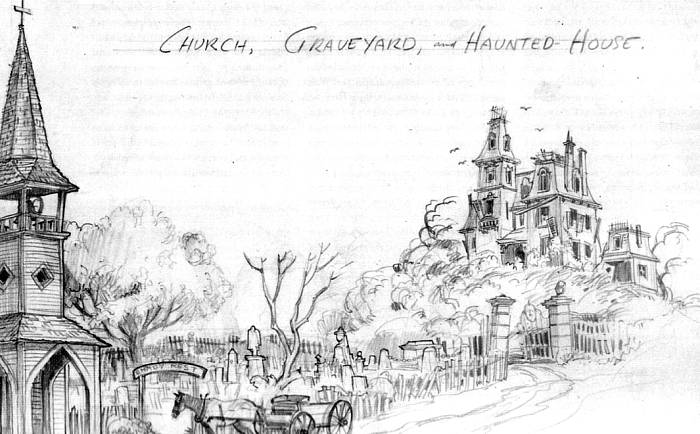
Walt Disney first approached Harper Goff to design concept art for the ghost house around 1951. With Goff also being in charge of designing concept art for Main Street, USA, he proposed the idea, along with Imagineer Ken Anderson’s help, of having a side street that would take guests up to the house – or a church with a graveyard – on a hill. Originally planned to be a walk-through attraction, visitors would venture through a “Museum of the Weird,” (a concept that I believe developed into Mystic Manor in Disneyland Hong Kong). Once the concept had been developed, Disney brought in the team of Rolly Crump and Yale Gracey to develop odd antiquities to be viewed.
As Disneyland’s development moved forward, Disney would give more of the project over to Ken Anderson. Anderson came to the studio in 1934 with a degree in architecture. While this degree wasn’t typical of animators, Anderson’s expertise lent itself well to things like how the dwarfs’ house should appear in Snow White. As Anderson said, “I didn’t want to be stuck in animation. I wanted to do story, painting… I wanted to do everything, be involved in everything. I loved being close to Walt, because Walt was where everything started.”
Eventually, Disney moved Anderson to The Haunted Mansion project where he began designing the exterior of the home. It was during this time that Anderson had the idea of an Antebellum style house that could be found in the Louisiana bayou. Anderson’s vision for the home was to appear broken down with rot and mold covering it. Disney loved the idea of an Antebellum home, but was less than pleased with the idea of it being moldy. With his visit to Tivoli Gardens still in his mind, he pushed for Disneyland to be clean and pristine. A compromise was made with the idea of New Orleans Square and a clean exterior. As Disney once said “We’ll take care of the outside and let the ghosts take care of the inside.”
With the move to design The Haunted Mansion after an Antebellum home, it was decided that it would be a part of the first expansion of Disneyland. Not long after opening day, Disney began pushing for the new expansion. As construction on New Orleans Square began so did the construction for the mansion’s building. As Anderson’s design began to take shape, Disney asked him to begin developing the story for the house.
The current story of the Haunted Mansion is open to interpretation, however, at the of the day the ghosts come together for a swinging wake. But, before the Mansion opened it’s doors there was a different story – one that would tie in with Marc Davis’s Pirates of the Caribbean.The story was to tell the tale of Captain Blood (in some accounts Captain Bloodmere or Captain Gore), a sea fairing mariner who was to wed a beautiful bride. Before the wedding could take place, tragedy struck, ending the lives of those involved. Rumor was Blood’s gold was still hidden somewhere on property.
As Anderson began to progress the story elements, they moved from being on paper to being developed on sound stages. As the effects for the story began to come to life, Anderson realized a lot of the concepts Disney wanted were a bit too complicated for a walk-through attraction.
There was also concern that if people were allowed to walk through at their own pace the ride would have exceptionally long wait times. At one point, the idea of using maid and butler characters to show the guests through was discussed. This gave way to the iconic Ghost Host.
Once the team decided to develop the Ghost Host, Disney turned to X. Atencio to write the script. When Atencio was tagged to write the Ghost Host he was surprised but happy – back in his youth he had aspirations of being a journalist. After Atencio’s script was complete it was time cast the voice that would become the star of the ride. After a few auditions and tests, it was decided that the Ghost Host should be voiced by veteran voice actor Paul Frees. Atencio once recalled:
Paul was such a genius. The nice thing about Paul, well, he would come in
for a recording session, and you would spend the first half hour listening to
Paul tell you how great he is. Then we’d finally say ‘Let’s get to work, Paul,’
and I’d give him the script, and he just run with it. He would come up with
stuff that I couldn’t dream of writing. I [didn’t have a large enough] ego to say,
‘No, I want you to do it just the way I wrote it.’ He’d really ‘plus’ it.”
The Haunted Mansion was still planned to be a walk-through. Even with the Ghost Host the capacity issue remained. Still, Disney believed a solution to wait times while keeping the mansion a walk-through was plausible. Imagineer Rolly Crump recalled visiting a system he and Disney observed at the Seattle World’s Fair. The pavilion featured an elevator that would take people through a ceiling. Upon stopping, the doors of the elevator would open to darkness and a TV screen would flicker on. People would automatically move toward it. Once that TV was done, it would go dark and another screen a few feet away would flicker on causing people to move toward it. Crump once noted that they basically stole this concept for the mansion. Crump believed that if Walt Disney had lived, The Haunted Mansion would have remained a walk-though attraction.
In 1966, Disney unexpectedly passed away. With Disney’s death, Dick Nunis took over as chairman of Disney Attractions and began pushing to increase capacity for the mansion. Many ideas, including the concept of a boat ride, were proposed. The Imagineers decided to use the Omnimover system. First used in Disneyland’s Adventure Thru Inner Space, the Imagineers began looking at how it could benefit the mansion. Imagineer X. Atencio once said, “Operations won, and [The Haunted Mansion] became a ride. The thing is, a walk-through had no capacity. It would only move thirty people through at a time. Nunis wouldn’t have that. We called him ‘Hop-along Capacity.’ We figured the Omnimovers were the thing to move people through.”
Once the decision to use the Omnimover system was in place, a few changes needed to be made to the ride script. Originally, the guest would follow an animal through the attraction – both a one eyed cat and a raven were considered. The guide would narrate the story of the mansion but, with the Omnimovers, guests would be moving to fast to hear the character’s whole spiel. The new system only further cemented the use of the Ghost Host to set the story in motion. It was even considered at one time to keep the raven and for the guest to learn at the end of the ride that the Ghost Host was the bewitched soul of the bird.
As time progressed and it came closer for the Mansion to open it’s doors, Coming Attraction pamphlets were produced. The Haunted Mansion was featured saying that the Walt Disney Corporation had been out collecting the best group of ghosts to fill the new home. The pamphlets promised the mansion to open in 1963 – yet, it wouldn’t open until 1969. By the end of 1963 the mansion’s exterior was complete but the rest of the ride was still in development. There were many reasons for the delay – the New York World’s Fair, Walt Disney’s passing, trouble of deciding on a direction for the story to go, and conflicts among the Imagineers. As time progressed and the mansion stood quiet, rumors began circling, one of which that has been debunked numerous of times grew in popularity – someone was given a sneak peak and was literally scared to death. Even with Disney’s passing and the problems in development, the team still wanted to see the dream of the Haunted Mansion come to life.
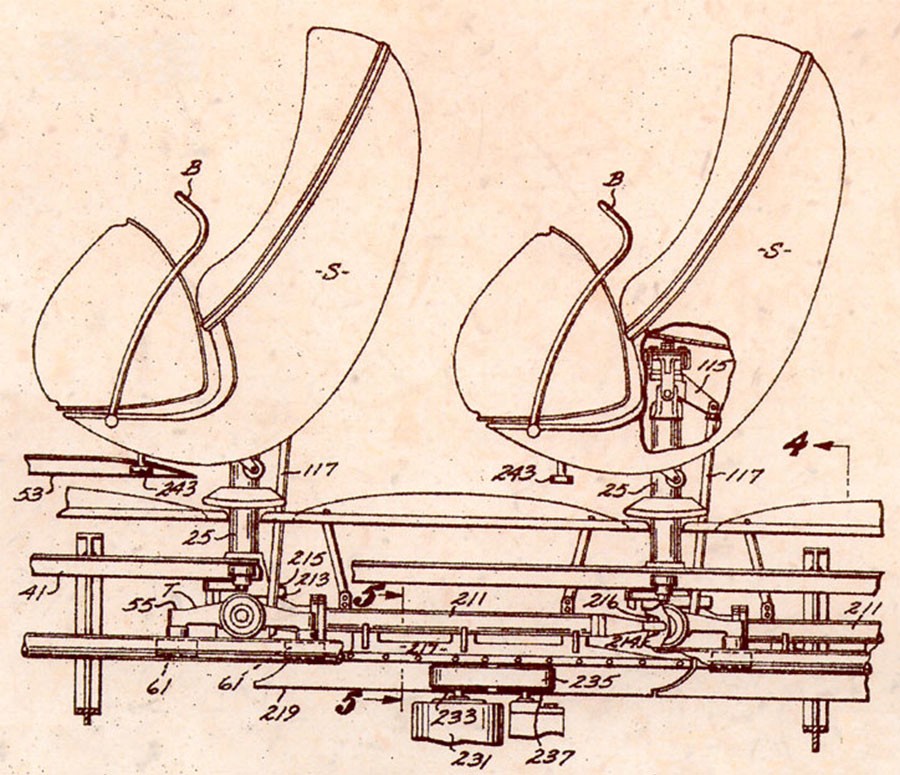
About a week before the mansion opened in 1969, Imagineer Marty Sklar called Dick Irvine for help in naming the Omnimovers. Some of the names that were suggested were the Seance Conveyance and the Ghost Mobile, however, the name Doom Buggies was selected (the pair believed most kids would be able to pick up the play on words of Dune Buggy).
Upon it’s opening day on August 9, 1969, Disneyland’s Haunted Mansion saw a record breaking attendance. 82,516 guests went through the ride in its first week of operation. The ride would hold this record for nearly eighteen years. As Imagineer David Mumford wrote, “it was the creak heard ’round the world.” At last the ride was open for all to enjoy and within two years the Haunted Mansion would open in Walt Disney World. Some sources say the two parks were working on their mansions at about the same time, getting the attraction just right. Duplicates of props were produced for both the Florida and California versions.
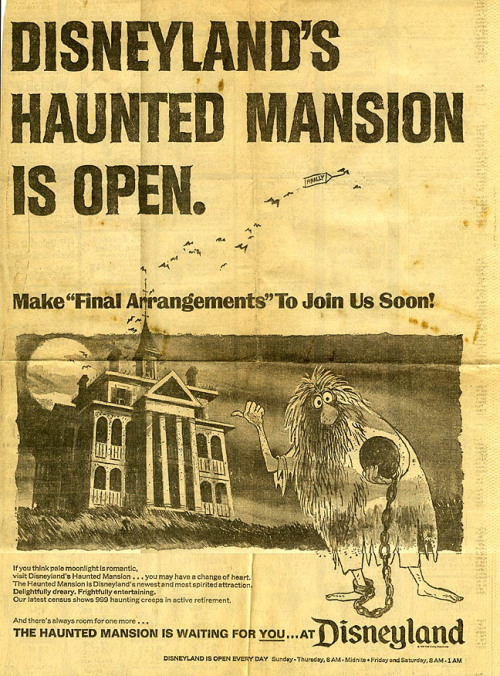
There are few differences between the mansion in Florida from it’s California counterpart. Walt Disney World had more room to work with so Imagineers decided to make Walt Disney World’s version a bit longer with a larger show building. Paul Frees was brought in to record further voice-overs of the Ghost Host for the added scenes. The attraction opened with Walt Disney World on opening day.
Like most iconic rides in the world of Disney, the Mansion’s history is complex. Officially, over the course of twelve years, the ride took shape – from determining it’s location to how it should look, Imagineers took their time to lovingly develop details that draw so many today. Whether you’re riding in Orlando or Anaheim, remember to bring your death certificate.
Make sure you check out Heather’s other history articles!
Photos@Disney and WDW Kingdom
Are you passionate about Disney? Do you want to be a contributing author to WDW Kingdom like Heather? Use the contact us button on the top of this page and reach out. We look forward to hearing from you!
(all articles and opinions in the articles are that of the author and may not reflect the opinion of WDW Kingdom)
